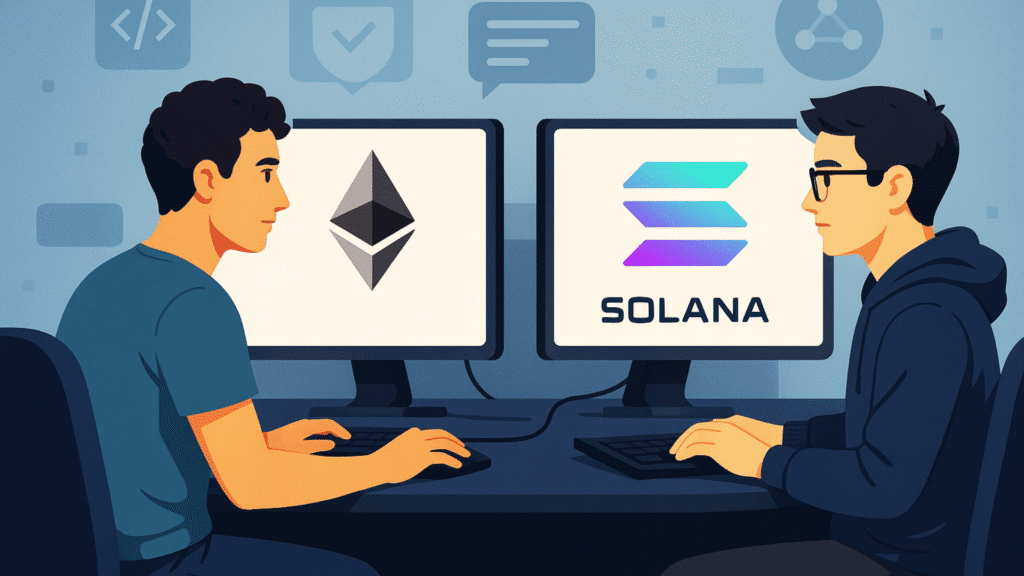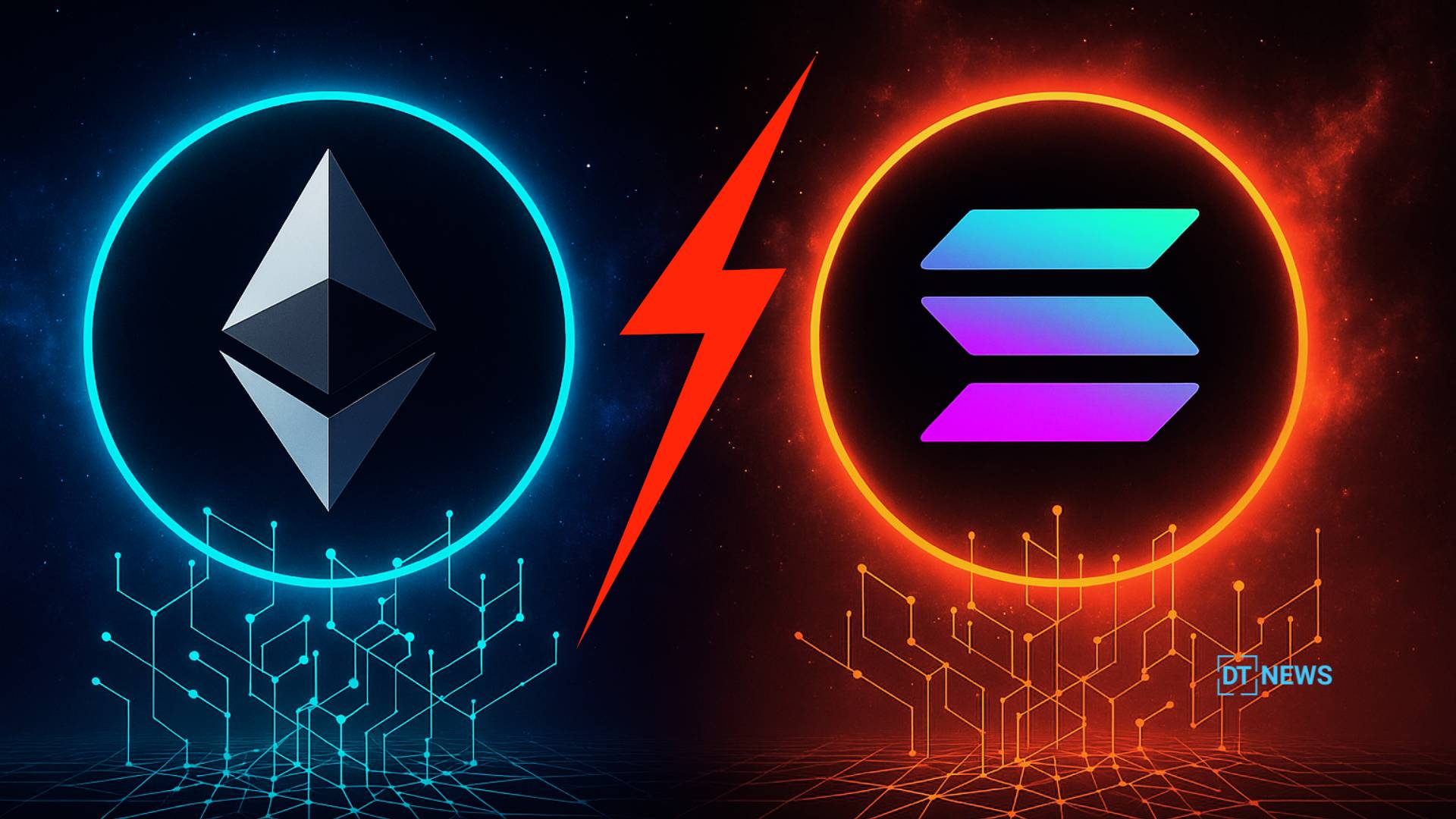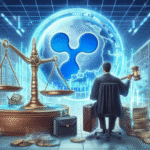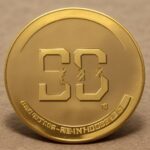According to a detailed analysis published by Curve Finance founder Michael Egorov, the ongoing Ethereum vs Solana debate is now playing a key role in deciding how decentralized finance will be built in 2025.
- What Makes Ethereum’s Modular Approach So Resilient?
- How Does Solana’s Speed Compare to Ethereum?
- Which Chain Aligns Better with Institutional Needs?
- How Do Developers View the Ethereum vs Solana Divide?
- Conclusion
- FAQs
- 1. Why do big investors prefer Ethereum in the Ethereum vs Solana debate?
- 2. What makes Solana attractive in 2025?
- 3. Which blockchain is more decentralized?
- 4. How many DeFi protocols run on Ethereum?
- 5. Which chain is better for regulation-heavy markets?
- 6. Do some projects switch from Solana to Ethereum?
- Glossary
This rivalry is no longer just about technology. It’s also a test of which blockchain architecture can win the trust of institutional finance.
As more big investors choose between Ethereum vs Solana, their decision will affect how global finance works in the future. Ethereum’s trusted and secure system attracts companies like BlackRock and UBS.
Egorov points out that choosing between Ethereum and Solana goes beyond just how they work. What really matters are the basic values behind them, like how fair the system is, how safe it is for users, and how easily it can interact with other networks.
In 2025, the outcome of this high-stakes contest will help define not only the future of DeFi but also the architecture of global finance itself.
What Makes Ethereum’s Modular Approach So Resilient?
Ethereum is built to expand by using different layers. Ethereum is built to expand by using different layers. The main layer, called Layer 1, manages the basic work; on the other hand, an extra layer, called Layer 2, helps to improve the speed and usability. This structure helps Ethereum to grow and stay Decentralized and secure.

The Ethereum ecosystem is trusted by many developers because it is well-developed and dependable. It is usually considered for building strong contracts because it provides a secure and steady environment for building a project.
That’s why there are over 1,388 protocols on Ethereum, which are much more than those on Solana. Its strong focus on security keeps attracting big investors, making it the preferred blockchain for “serious money.”
How Does Solana’s Speed Compare to Ethereum?
Solana focuses on being fast, cheap, and easy to use. It runs everything on one main chain, called Layer 1, and can handle around 3,000 to 4,000 transactions per second right now.
With a new update called the Firedancer validator, Solana could reach over one million transactions per second in the future, though that level hasn’t been reached in real-world use yet.
But this high speed comes with a cost. Solana uses one main node to organize transactions, which makes some people worry that it’s too centralized.
Egorov points out that this could be a problem in places where being fully decentralized and neutral is very important. Still, for things like gaming, NFTs, or government systems that don’t need full decentralization, Solana’s setup might work well.
| Feature | Ethereum 2025 | Solana 2025 |
| Fastest Blockchain | No | Yes |
| Lower Fees | No | Yes |
| More Decentralized | Yes | No |
| Larger Ecosystem | Yes | No |
| Better for High-Speed Apps | No | Yes |
| More Institutional Use | Yes | No |
Which Chain Aligns Better with Institutional Needs?
Big investors usually look for stability, trust, and clear rules rather than just speed. According to experts familiar with the Ethereum Foundation, what makes Ethereum appealing to regulators and asset managers is its long-standing commitment to decentralization.

Its neutral design helps financial institutions avoid risks tied to changing regulations, which is especially valuable in global markets
On the other hand, Solana Labs’ Anatoly Yakovenko thinks performance is the most important factor. He believes that if blockchain feels as smooth as regular web apps, it could attract billions of users.
But for many people in finance, the Ethereum vs Solana choice isn’t just about being fast or easy to use, it’s more about trust, safety, and how strong the system is in the long run.
| Design Aspects | Ethereum (2025) | Solana (2025) |
| Architecture | Layer 1 & Layer 2 (modular) | Single Layer 1 (monolithic) |
| Consensus Mechanism | Proof of Stake | Proof of History + Proof of Stake |
| Smart Contract Language | Solidity | Rust, C, C++ |
| Decentralization | Very high | Lower |
| User Experience | Improving with upgrades | Fast, smooth, low fees out of the box |
How Do Developers View the Ethereum vs Solana Divide?
Between Ethereum vs Solana race, developers still choose Ethereum because it has a strong and trusted system, particularly for building complex DeFi apps. Its coding language, Solidity, is easy to find help and resources for.

Ethereum is trusted by developers because it offers strong protection through more safety checks and locked smart contracts that can’t be changed. Which helps to protect their work. On the other hand, Solana is faster and is less costly, but it uses Rust, which is harder to use.
Because of this, some projects start on Solana but later they move to Ethereum as they provide better support and tools, which makes it easier to link their apps with other
In online developer chats, the Ethereum vs Solana debate often comes down to how to keep things working smoothly together without losing speed
Conclusion
The Ethereum vs Solana debate has no clear winner, as each has its own strengths. Ethereum is trusted for its secure and modular design, while Solana is known for speed and low costs.
As DeFi grows, Ethereum’s decentralized setup is seen as more reliable for big financial systems, while Solana may do well in fast-moving sectors like gaming.
Summary
In 2025, the Ethereum vs Solana debate is about more than speed or cost, it’s about trust and long-term use. Ethereum has a strong system that developers trust.
Solana is much faster and cheaper, which makes it great for apps like games and NFTs, but some say it’s not as decentralized. While both are important to DeFi, Ethereum’s safer and more trusted setup makes it better for large financial systems.
FAQs
1. Why do big investors prefer Ethereum in the Ethereum vs Solana debate?
It’s more secure and trusted.
2. What makes Solana attractive in 2025?
It’s a faster and cheaper architecture.
3. Which blockchain is more decentralized?
Ethereum blockchain. In most Ethereum vs Solana discussions, Ethereum is considered more decentralized
4. How many DeFi protocols run on Ethereum?
Over 1,388 protocols, far more than Solana,
5. Which chain is better for regulation-heavy markets?
Ethereum. Its neutral, open design aligns better with global regulatory expectations.
6. Do some projects switch from Solana to Ethereum?
Yes. Many move for better support, stronger connections, and long-term ecosystem stability.
Glossary
Smart Contracts – Code that runs deals automatically.
Firedancer – Solana’s new upgrade to boost speed.
Rust – Solana’s coding language, harder to use.
Solidity – Ethereum’s coding language.



















































































































